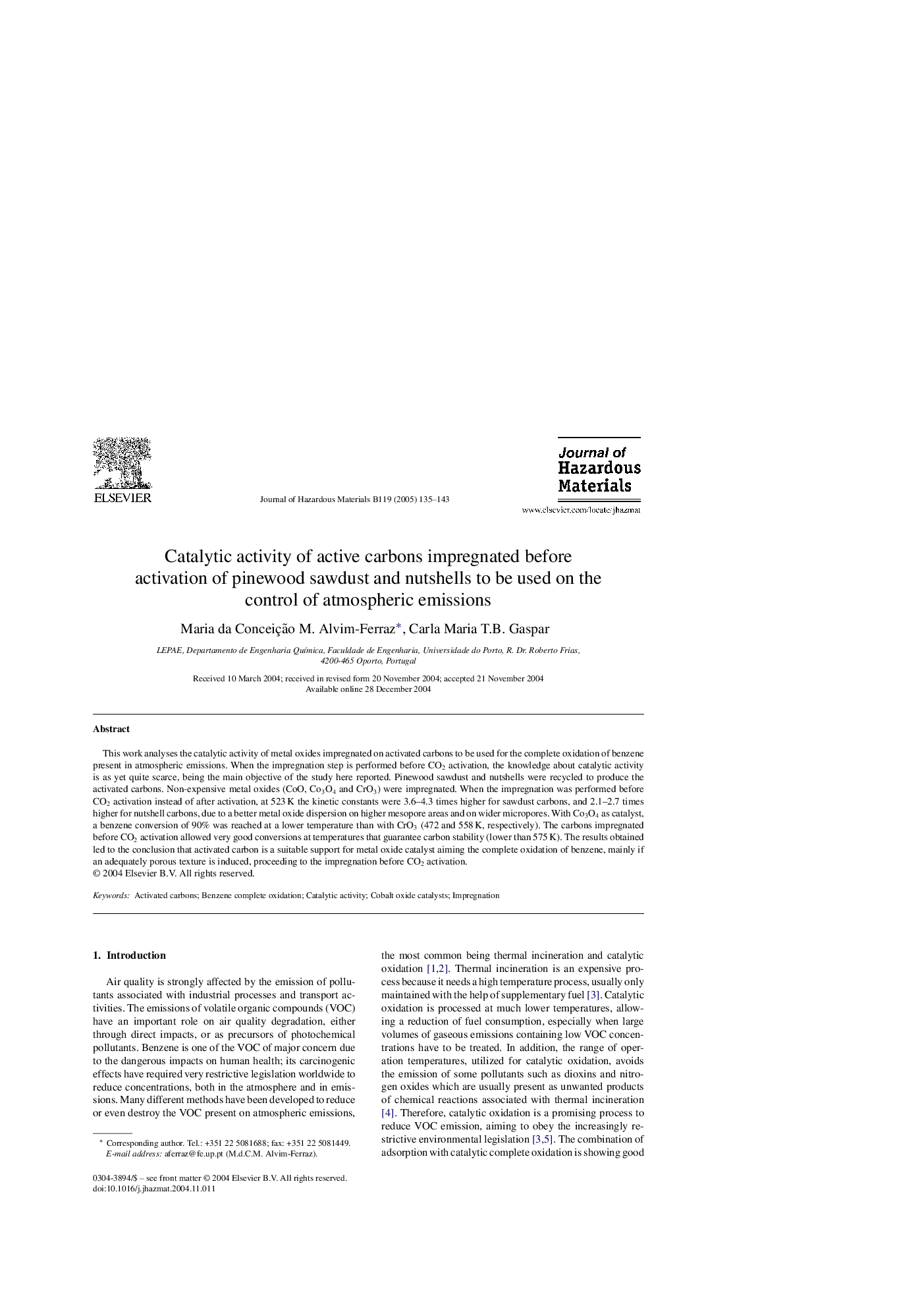| Article ID | Journal | Published Year | Pages | File Type |
|---|---|---|---|---|
| 9674350 | Journal of Hazardous Materials | 2005 | 9 Pages |
Abstract
This work analyses the catalytic activity of metal oxides impregnated on activated carbons to be used for the complete oxidation of benzene present in atmospheric emissions. When the impregnation step is performed before CO2 activation, the knowledge about catalytic activity is as yet quite scarce, being the main objective of the study here reported. Pinewood sawdust and nutshells were recycled to produce the activated carbons. Non-expensive metal oxides (CoO, Co3O4 and CrO3) were impregnated. When the impregnation was performed before CO2 activation instead of after activation, at 523Â K the kinetic constants were 3.6-4.3 times higher for sawdust carbons, and 2.1-2.7 times higher for nutshell carbons, due to a better metal oxide dispersion on higher mesopore areas and on wider micropores. With Co3O4 as catalyst, a benzene conversion of 90% was reached at a lower temperature than with CrO3 (472 and 558Â K, respectively). The carbons impregnated before CO2 activation allowed very good conversions at temperatures that guarantee carbon stability (lower than 575Â K). The results obtained led to the conclusion that activated carbon is a suitable support for metal oxide catalyst aiming the complete oxidation of benzene, mainly if an adequately porous texture is induced, proceeding to the impregnation before CO2 activation.
Related Topics
Physical Sciences and Engineering
Chemical Engineering
Chemical Health and Safety
Authors
Maria da Conceição M. Alvim-Ferraz, Carla Maria T.B. Gaspar,
